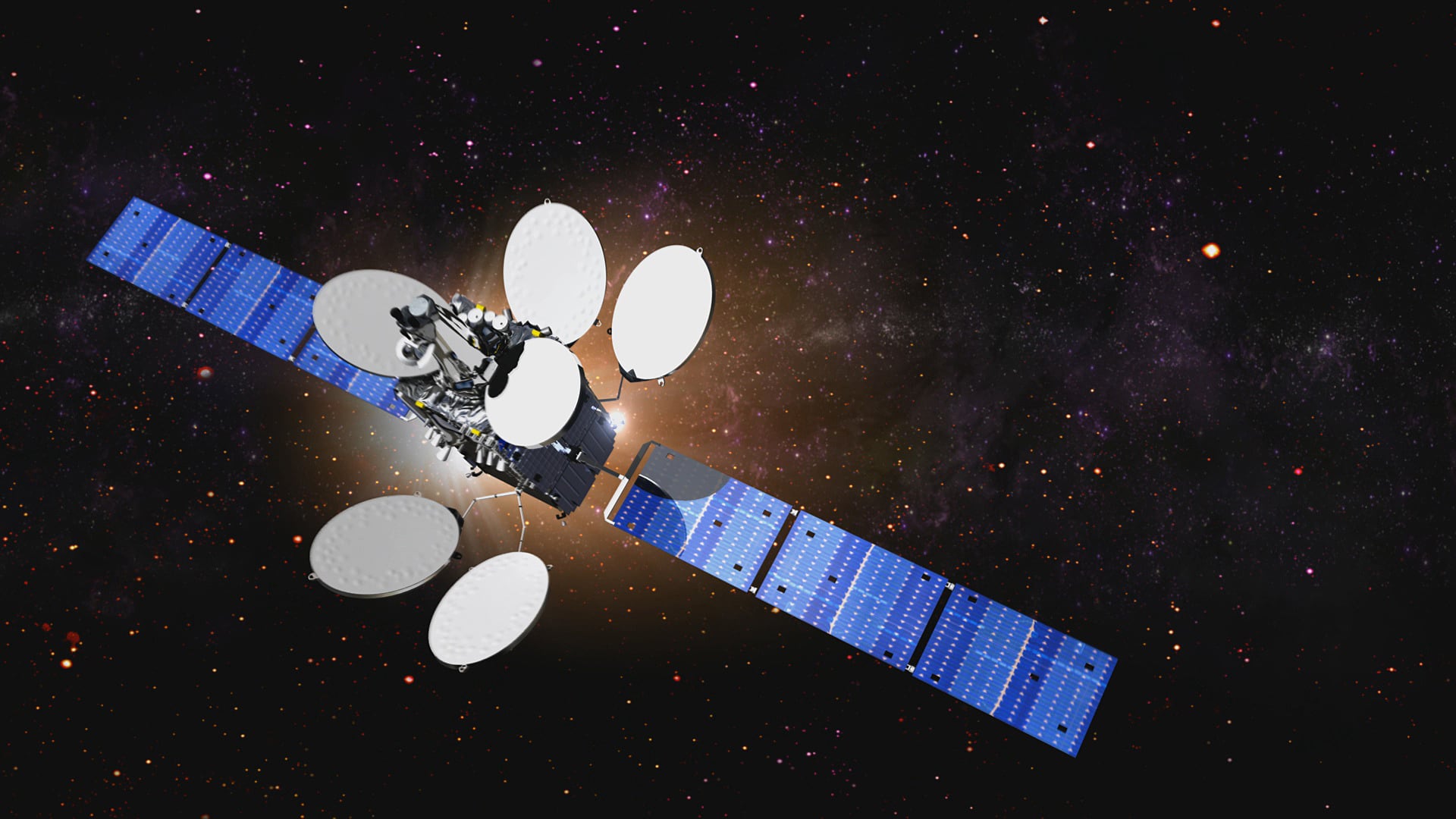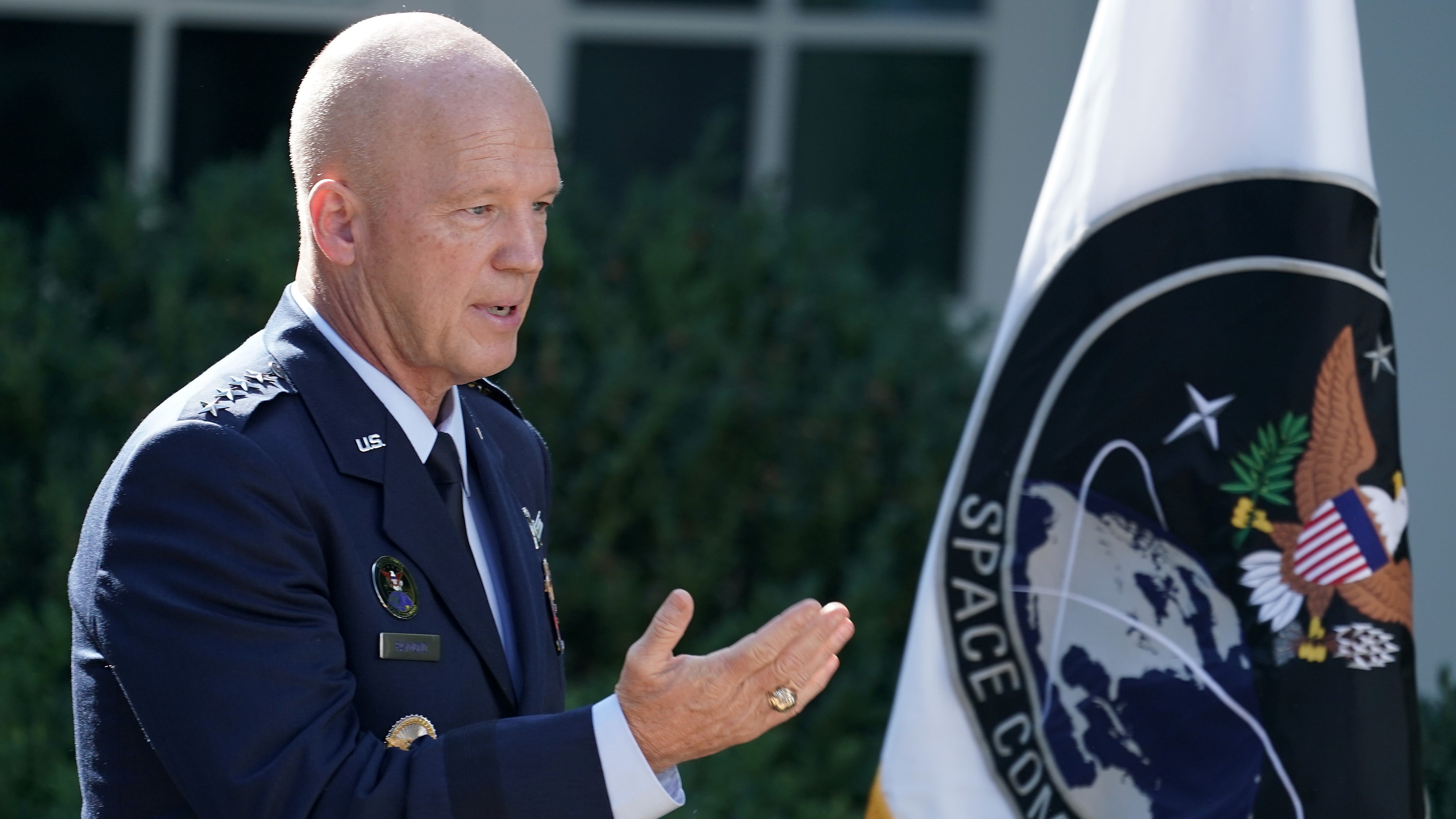Russia conducted a direct ascent anti-satellite missile test April 15, according to a statement from U.S. Space Command.
“Russia’s DA-ASAT test provides yet another example that the threats to U.S. and allied space systems are real, serious and growing,” said Gen. John “Jay” Raymond, the head of U.S. Space Command and chief of space operations for the U.S. Space Force. “The United States is ready and committed to deterring aggression and defending the Nation, our allies, and U.S. interests from hostile acts in space.”
A U.S. Space Command spokesperson said the military is not tracking any additional debris because of the event but did not provide additional details about when the test took place.
The Russian Embassy did not immediately respond to a request for comment.
Brian Weeden, director of program planning for the Secure World Foundation, said the test is likely of the Nudol, a ballistic-missile system capable of taking out satellites in low earth orbit. He warned not to overreact, as the system has been tested several times in recent years. According to the CSIS Aerospace Security Project’s Space Threat Assessment 2020, Russia conducted its seventh test of Nudol in December 2018.
As to why military leaders issued the statement, Weeden said it is "part of the DoD being more public about what’s going on in space, which is good. But it also seems the only thing they’re doing about it is using it to justify more U.S. spending on our own counterspace capabilities.”
RELATED

Anti-satellite missile tests are rare, with the most recent prominent example taking place in March 2019 when India blew up one it its own satellites in orbit with a missile. That test was criticized by observers for the amount of orbital debris created by the impact. Such debris poses a threat to other satellites.
The alleged anti-satellite test comes on the heels of multiple instances of behavior from Russian satellites that U.S. officials have called “irresponsible” and “hugely provocative.”
In Oct. 2017, Russia deployed Cosmos 2519, a space vehicle it described as a “space apparatus inspector." Once on orbit, observers recorded it deploying a sub-satellite (dubbed Cosmos 2521) capable of maneuvering around other satellites.
“What happened next is the disturbing part,” recounted Assistant Secretary of State for International Security and Nonproliferation Chris Ford. He was speaking at a Center for Strategic and International Studies event April 6.
“The sub-satellite (...) launched an additional object into space — Cosmos 2523—at the high relative speed of about 250 km per hour," he explained. “I don’t want to put too fine a point on it, but Cosmos 2521 demonstrated the ability to position itself near another satellite and to fire a projectile.”
RELATED

Russia has continued to conduct provocative actions in space since then, he said. In November and December, Russia launched COSMOS 2542 and COSMOS 2543, which have actively maneuvered near a U.S. government satellite in low earth orbit. And according to U.S. Space Command, both of those Russian satellites have also exhibited characteristics of a space weapon.
“Since the Russian military had already demonstrated its ability to fire a projectile from one satellite in space just over two years before, Russia’s irresponsible recent movements are clearly hugely provocative,” said Ford.
Even without the projectiles, an apparent collision between two Russian inspector satellites in 2019 demonstrates the danger of Russia’s proximity operations, he added.
Raymond said the anti-satellite test undermines Russia’s push for a treaty preventing the placement of weapons in space.
“This test is further proof of Russia’s hypocritical advocacy of outer space arms control proposals designed to restrict the capabilities of the United States while clearly having no intention of halting their counterspace weapons programs,” Raymond said. “Space is critical to all nations and our way of life. The demands on space systems continue in this time of crisis where global logistics, transportation and communication are key to defeating the COVID-19 pandemic."
In his recent comments, Ford also expressed skepticism of the effort, known as the Treaty on Prevention of the Placement of Weapons in Outer Space and of the Threat or Use of Force Against Outer Space Objects.
“(The treaty) purports to help solve the very problems that they are themselves working so hard to create,” said Ford.
Notably, the treaty does not to address terrestrial anti-satellite weapons, ranging from direct-ascent missiles to lasers to electronic interference. Russia has also pushed for the United Nations to adopt a No first Placement of Weapons in Outer Space resolution, a diplomatic effort Ford compared to a snake oil salesman.
“A more accurate term for the Russian initiative might be the No Second Placement Initiative, because the only point of these diplomatic overtures seems to be either propaganda or worse,” said Ford. “This seems to be an effort to persuade other countries not to do what Russia has every sign of already having done itself.”
According to the Secure World Foundation’s annual Global Counterspace Capabilities report, released in March, Russia has rigorously pursued the development of counterspace systems in recent years. In addition to Nudol and the satellite behaviors described above, the report claimed Russia is developing on-orbit jammers powered by a nuclear reaction and a large laser designed to dazzle or damage satellites.
Nathan Strout covers space, unmanned and intelligence systems for C4ISRNET.
Aaron Mehta was deputy editor and senior Pentagon correspondent for Defense News, covering policy, strategy and acquisition at the highest levels of the Defense Department and its international partners.








